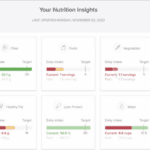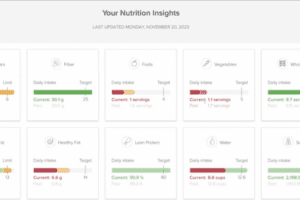Remote patient monitoring devices from different manufacturers rarely talk to each other. There are standards for device data exchange, but no incentives or penalties for device makers to adopt them. Instead, most manufactures pair their devices with their own proprietary smartphone app. MedM wants to tear down these walled gardens with their platform that acts as a universal connector.
I had the opportunity to learn more about the company and its offering when I interviewed Denis Khitrov, CEO of MedM.
Hidden Challenge of RPM
Early in our conversation, Khitrov shared a hidden challenge that healthcare organizations face when rolling out a Remote Patient Monitoring (RPM) program [paraphrased]: “It’s really not that easy to have an open solution where you can cherry-pick the sensors that you really like. You might want a blood pressure cuff from one vendor, an ECG from another, and a glucose monitor from another. All three claim that they can be your complete RPM solution, but you’ll find that none of their devices talk to one another. It’s a big challenge.”
In a situation like this, healthcare organizations are left with few choices. They can either go with a single vendor’s devices or they can invest to develop the connections between the devices themselves. Neither is ideal.
Going with a single vendor’s solution may avoid the expense and time of coding, but it means a limited selection of devices and potentially a constraint on future expansion should the selected vendor not make a sensor/device that matches a future need.
A Single Connected Platform
MedM aims to solve this challenge by building a framework/platform that has pre-built connections to a wide array of devices and sensors. MedM’s team would do the hard work to connect to the desired device so that healthcare organizations do have to reinvent the wheel. Instead, all that the organization would have to do is connect to the MedM platform and it takes care of the rest. No more connectivity or data sharing headaches.
Now the organization can choose from any device that is already MedM compatible. No more constraints to a single vendor.
“For more than 10 years we have focused on building a framework for fast deployment of connected health solutions,” explained Khitrov. “We offer software modules to collect data directly, peer-to-peer, from the sensors/devices and make this layer transparent for our partners and customers. If anyone would like to get data from a few hundred different sensors, we give them a single interface.”
Even better for MedM customers, is how the company can quickly add new devices to it’s platform – a key competitive advantage. If an organization wants to connect to a device that is not yet compatible with the MedM platform, they can ask Khitrov’s team and they will go and build it.
Growth Expected
According to a report by Precedence Research, the global RPM market was USD 965 million in 2021 and is expected to grow to USD 5.1 billion by 2030. This growth likely means more devices from more vendors entering the market.
Although some of these vendors may adopt connectivity and interoperability standards, like HL7-FHIR, many may choose not to. In the years ahead the need for easier device connectivity will therefore continue to grow as the number of device vendors in the ecosystem grows. MedM is well positioned to not only capitalize on that growth, but as the number of device connections to their platform grows so too will their value to healthcare organizations.
“We really reduce the headache for scaling and connecting to other sensors in all possible ways,” said Khitrov.
Watch the full interview with Denis Khitrov to learn:
- Why connecting to RPM devices is like being a translator at the UN
- Why vendors always default to building their own app to connect their device
- How partnering with device makers is key to ensuring compatibility now, and in the future
Learn more about MedM: https://www.medm.com/
Listen and subscribe to the Healthcare IT Today Interviews Podcast to hear all the latest insights from experts in healthcare IT.
To stay up to date on the top health IT stories, subscribe to our newsletter.
MedM is a proud sponsor of Healthcare IT Today.
Transcript
[00:00:09] Colin Hung: Hello and welcome to Healthcare IT Today, where we explore the latest healthcare technology trends and discover valuable insights in IT. I’m Colin, Hung and today we’re going to talk about RPM and the hidden challenges of connecting the various devices that we all take home. Sitting down with me today is Dennis Khitrov, CEO of MEDM, makers of a platform that enables connected health. They’ve done a lot of work to connect a lot of RPM devices. Dennis, welcome to the program.
[00:00:43] Denis Khitrov: Thank you, Colin for inviting us. It is a pleasure to talk with you – to describe and give some insight on this challenge that connected health is having these days and how we all jointly can resolve it and what exactly we are doing and how we feel about that.
[00:01:04] Colin Hung: It’s very interesting what you do. MEDM, you guys make that a platform that helps medical device makers with their connectivity issues. You help on the device side with Bluetooth and on the software side with data exchange. I have to be honest, I thought all of the devices were actually already compatible with each other, but that’s clearly not the case is it?.
[00:01:29] Denis Khitrov: Yeah. Somebody who has a logical way of thinking would expect that, but in real life, it’s totally far from this point. Try to remember how the chargers for the smart phones were different – we still have a crazy diversity. In spite or despite having some standards and multiple parties trying to bring standards, that still doesn’t work. People are resolving this interoperability problem in different ways.
[00:02:12] We are one of the, I’ll say most mature guys who have spent already more than 10 years building the most connected platform. We understand how we can help the whole community and the whole ecosystem to grow, to bring healthcare to the new paradigm and new way of thinking and operating more in preventive way.
[00:02:37] Colin Hung: So Dennis, can you maybe explain for, for me, what happens when people don’t have your platform? What, what kind of interference can happen? What are some of the bad things when the devices actually don’t work together? What can happen for a patient when they’re using it?
[00:02:55] Denis Khitrov: In the digital health right now, one of the most popular terms is interoperability. It’s very often used in the context of the difference between data exchange of EHR, EMR. all healthcare record systems, but actually this is much wider.
[00:03:17] In real life, even simple devices like blood pressure cuffs or pulse oximeters or temperature meters, they are already enabled and able to send data – the results of the measurement – but everything speaking in a different language. The problem that RPM service providers are experiencing an interoperability problem, but in a little bit different way.
[00:03:50] It’s really not that easy to have an open solution where you can cherry pick the sensors that you really like for different reasons – because of the brand, because of the color, because of this capability in this specific market. So people can get a solution from guys making a glucose meter, guys who make blood pressure cuffts or ECGs, and that will be three different systems. All three, claiming that they have the whole RPM story. And finally RPM providers, having their three different system to be integrated, somehow aggregated together, to bring only one solution for a big hospital or chains of hospitals or medical service providers. It’s a big challenge.
[00:04:40] They can’t scale. They need to have a special technical and system integration partners or their own in-house department. And that’s a big point – a big obstacle to push these services. And there actually is a reason nobody goes away, Just follow the standards and having the standards.
[00:05:02] But there are so many reasons. a lot of business reasons. And, also some probably felt the motivation in terms of understanding where is the business purpose, which just increases the diversity and interference. As a result, if somebody would like to deploy RPM, they need to find the right software vendor, hardware vendor, and then they must stick to this solution that to replace the blood pressure cuff could be really not easy or even complicated.
[00:05:37] And of course adding another solution, like you get something that already has a glucose meter, blood pressure and weight scale, and you’d like to add spirometry. But adding spirometry to existing solutions that is already deployed, could be a big pain because of this specific vendor doesn’t provide it and integration could take a really long time. And even system might not be really prepared for this kind of scale. So that’s strongly different with our product, how MEDM has doing this story for 10 years.
[00:06:14] Colin Hung: Okay. So it sounds like what you’re describing is a lot of these device makers have a walled garden. They’ve created their own connectivity for their own devices, but that those devices don’t really talk to other EHRs and don’t talk to other device makers. So they basically try to lock a hospital into just using their own devices. Is that right?
[00:06:40] Denis Khitrov: I would say it’s even more than this. I would say it’s a little bit more complex. What is happening is it’s not only about the device maker. Because how it’s happening, the device makers, those who manufacture, those who OEM mostly Chinese vendors, some Italian vendors, some US venders, some German vendors, multiple parties – they do white labeling.
[00:07:07] They’re a part of the supply chain for the system integrators for sourcing from them or for some retail vendors. Retail vendors like CVS. But these devices are actually grabbed from different OEMs that are sold under the same brand. And the point is, and then having this set with some software piece of sitting on top of that and the layers and modules used by system integrators is complicated. This is one point.
[00:08:02] Colin Hung: Right, so how is MEDM solving this problem? What do you do to, to help, software device makers not to be so cut off from everyone else in the world?
[00:08:16] Denis Khitrov: First of all, it’s all about focusing. We are extremely focused. We are are software guys who and all we do is software. For more than 10 years, [actually the project was starting more than 10 years ago] we focused on building a framework for fast deployment of a connected health solutions.
[00:08:40] I used to pitch our story as a kind of Lego. We have some standard bricks. And we have a reference constructions. We build those reference constructions with most the requested most needed pieces. We have in house. We have a crocodile and we have a submarine and we can make a yellow submarine. We do white labeling and OEM services. If somebody would like to go with yellow, we can make a yellow submarine. If they would like to have a green crocodile was a little bit taller tail we can do it with the same bricks or we can let our partners to do that.
[00:09:15] So what we do, we offer the software modules to collect data directly, peer to peer, right from the sensors and make this layer to be transparent for our partners and customers. So if anybody would like to get data from a few hundreds of different sensors, we give the same interface. Like if one of the sensors speak in Chinese and another Italian and another Spanish and English or Deutsche, we make them all speak in English. And deep translation, fully transparently.
[00:09:53] Hey, you can talk with all the sensors in English. We give them these drivers and then we have the whole RPM piece, and we can provide the SDK. If anybody already has a user experience, and would like to add connectivity as a part of their solution, like extending of existing functionality, or we can make a really fast deployment because we have a reference house.
[00:10:18] And it’s not a problem for us even to add a custom roof or place some custom characters’ right there if it’s needed. So basically we give very well-developed OEM modules that is ready to be deployed.
[00:10:36] Colin Hung: So basically what I’m hearing is that as a device maker, instead of me writing software, that won’t be compatible with other devices and other systems out there, I instead use your platform. I allow my sensors to be accessed by MEDM and because you’ve done the work, you can connect to other devices and other systems for me. And you’ve done that with many, many other devices.
[00:11:07] Denis Khitrov: So Colin, it’s even better. It’s not like the device vendors are just using us. We doing the whole job.
[00:11:10] We only need to get this communication protocol. We sign NDAs. We sign a license agreement where it’s needed. When we do this or staff with our own resources, we write the drivers and the whole system already exists. We only plug in another sensor and sometimes we just need a couple of days, sometimes even hours, depending on complexity. If the hardware vendor is open for partnership and gives a proper level of knowledge and connectivity to us…then we simply plug it into our system and the rest already exists.
[00:11:50] What is most important is that this existing deployment, which is already in the market, can easily (snaps fingers) get this sensor connected to and be used on the data platforms and in the environment. We simply make this upgrade and that is there. Better for the end users, for the doctors, for patients, for a system administrator, it’s all the same.
[00:12:17] It’s just like a new model appearing there. Like you get another blood pressure cuff off the shelf at CVS, and you just can go and buy it. Here, it’s just a new model right here. you can use. That is really important for scaling especially for international projects, like some companies who supply and do all system integration for pharmaceutical case studies or trials.
[00:12:44] Colin Hung: Okay. So somebody who connects with the MEDM platform. What you’re saying is that when you add new devices, I don’t have to do anything to make use of that device because you’ve already done the connection with that sensor.
[00:13:00] Denis Khitrov: Yeah, it’s more or less like this. So if you make any deployment and actually you even can do it, cause we also have a B2C solution for family care for a where you can track your children or your parents, or just your family members. We can install it. And we do intensively add in more and more sensors that you can buy online from Amazon or from pharmacies and any sources where you can buy.
[00:13:30] And if we release a new one, you can buy a new one and just use it with the system. Same with those customers who use the whole solution. Of course, pgrade is needed. Unfortunately if it changes software version, you still need to upgrade.
[00:13:48] But this part could be for the end users, transparent. It’s not even about us. We are good. But say that it’s simply what already existing environments are enabling to do.
[00:14:00] We really reduce the headache for scaling and connecting to other sensors in all possible ways. We’re the whole solution. We have the branded and customized application. We have the SDK, which could be plugged into the solution. And also of course consulting. We’re not affiliated with any vendor, but depending on their use case, we have a good understanding of the sensors that could be used.
[00:14:45] There are some devices that can keep history longer. We know all of that because we work directly with the manufacturers, with the vendors. So it is totally an ecosystem win-win-win-win story. Because the knowledge we have. From one side we can share with those building solutions and the requirements that come in from those who really do an operation in the field. We can transfer this request, this knowledge backwards to the sensors makers.
[00:15:13] Colin Hung: Where can people go to find more information about MedM?
[00:15:19] Denis Khitrov: MEDM.com













